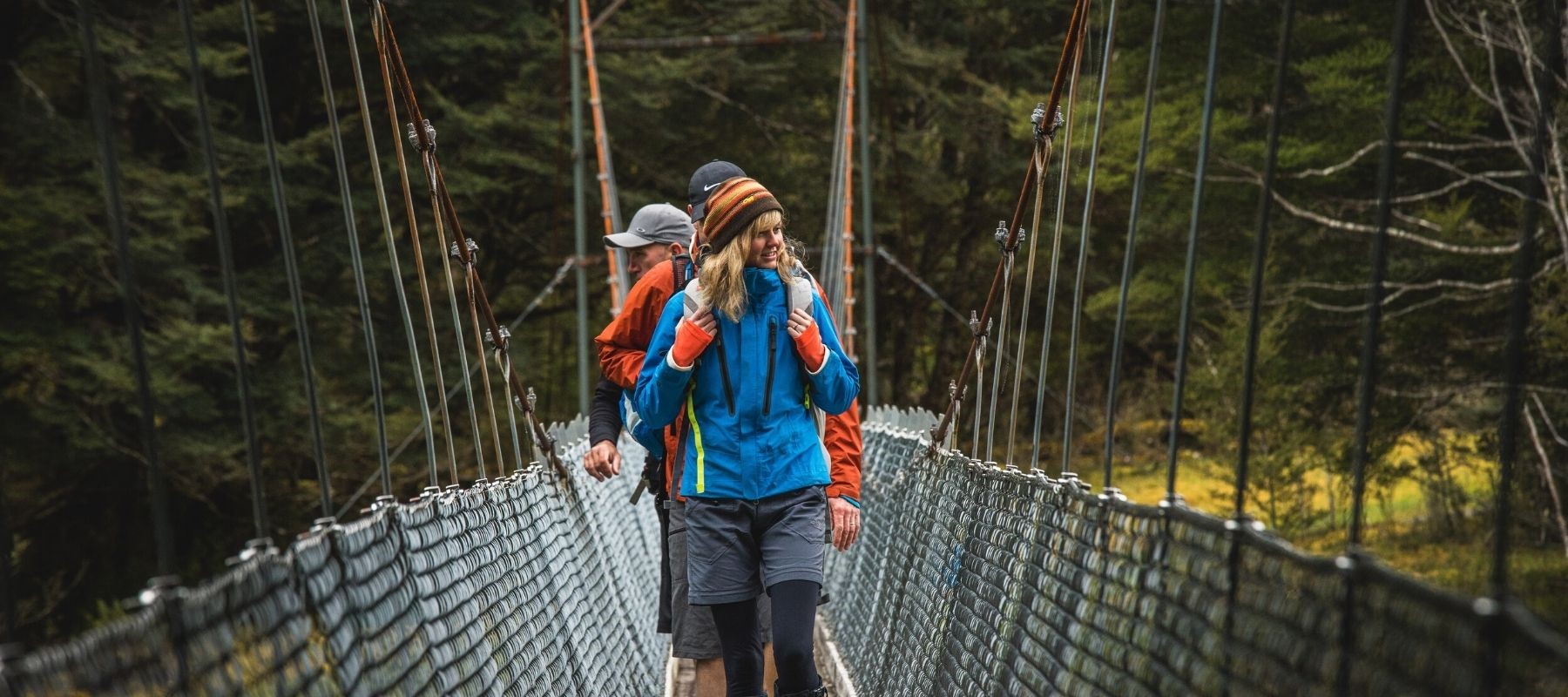History of the Milford Track

The history of the Milford Track
The Milford Track was established in 1888 as an overland route between Lake Te Anau and Milford Sound. Local Maori were the first to use an overland route between Lake Te Anau and Milford Sound in search of greenstone - pounamu. The dense and challenging journey was a barrier to settlers who arrived later. It wasn't until 1888 that a talented bush navigator and local character carved an established track through the bush. Quintin MacKinnon came to Milford Sound from the Shetland Isles in Scotland and soon became one of the area's pioneering settlers.
MacKinnon became the first Milford Track guide, and fittingly the 1,000-metre-high pass was named after him. Visitors were in good hands with Mackinnon. He was good-natured, highly-skilled and renowned for cooking up a delicious pompolona (a type of scone). Guests would board his sailing boat for the ride up the lake to the start of the track before hiking over the pass, across Lake Ada and down to Donald Sutherland's hotel at Milford Sound. Until the highway was built in 1954, the only way back was to turn around and walk out again.
The road that wasn't; and the 'the finest walk in the world'
Word soon spread about this great new walk, and by 1890 it became clear that the track would need an upgrade. An ambitious plan was suggested to turn the track into a road and build overnight huts along the way. This was no simple task. The rock in the area is very hard, and the conditions of the day were tough. Prison convicts were brought in and set to work hacking their way through the rock by hand. But their skills and equipment were poor, and many fell sick or escaped into the bush.
When the Prime Minister turned up to inspect the work, he wasn't impressed. He quickly got rid of the prisoners, abandoned the road idea in favour of a packhorse track, and put the government in charge. When the Public Works Department finally finished the job, tourist numbers increased, and in 1900 more than 100 trampers walked the track.
In 1908 the London Spectator would seal the Milford Track's fate by calling it 'The Finest Walk in the World'.
Unfortunately, Mackinnon himself didn't live to hear this impressive accolade, sadly drowning in Lake Te Anau in 1892. But he is remembered in some of the names along the track: Pompolona Lodge, Quintin Falls, and, of course, Mackinnon Pass.
A piano's intrepid journey
At Quintin Lodge, there is a particular piece of furniture you would not expect to see in the middle of the wilderness. An old piano! One look at the location, and it's plain to see that manhandling it along the wild mountain track must have been pretty tricky. The adventures of this intrepid piano took place in the summer of 1955.
May Anderson, the hut keepers wife, longed for a piano to keep her occupied during their long, isolated stretches up at the hut.
So Bill Anderson hatched a plan. He found a second-hand piano and a team of willing volunteers. They packed the piano into its case, attached wheels to the bottom, then laid steel rails in front of it and pushed it along, taking up rails from behind and putting them back down in front.
The piano put up with several weeks of this treatment on its 13-mile journey. It would let out deep, indignant clangs if it were jolted. But when it was finally unpacked for a delighted Mrs Anderson, it was in perfect tune, and the weary piano-pushers were rewarded with a musical soiree.
Each day on the track is a new adventure! On day one, you follow the Clinton River through ancient beech forest and across nine suspension bridges. There's a lot more walking on day two, as the track heads up to the base of Mackinnon Pass.
The best of the scenery comes on day three, as you cross the mountains and check out the incredible views from the Mackinnon Pass. Many trampers find this day the most challenging, but there's a chance to freshen up at the mighty Sutherland Falls.
Visiting the Falls is a side-trip from the main track. But it's highly recommended, being the fifth highest waterfall in the world and the highest in New Zealand! Donald Sutherland discovered the 580-metre cascade in 1880, but nobody knew where all that water came from until a Mr Quill bravely climbed the falls ten years later, and discovered Lake Quill at the top.
On day four there's a gentle descent along the rain-forested banks of the Arthur River, via Bell Rock and Lake Ada, to its mouth in Milford Sound.
There are day shelters along the track, as well as notable toilet facilities. One lonely pit-stop is all that remains of the original 'first night hut', which was eroded by the river. Another boasts what could be the finest' view from a loo' in the world!
